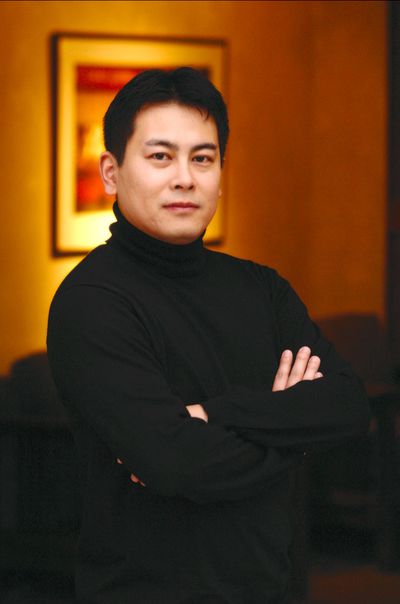A bevy of Beethoven
Casual Classics opens with legendary sounds

Think of Beethoven and you’re likely to think of the two mighty chords that slap the music of his “Eroica” Symphony into action, or the ominous energy that drives the Fifth Symphony, or the glorious tumult of the Ninth.
The Spokane Symphony will take a look at some different sides of Beethoven when the orchestra plays the first of its Casual Classics concerts Friday at the Martin Woldson Theater at The Fox. The program, conducted by Morihiko Nakahara, will feature one of Beethoven’s less frequently performed symphonies, Symphony No. 2 in D major.
Nakahara will also furnish a sampling from Beethoven’s Septet along with music by Beethoven’s teacher, Joseph Haydn, and his contemporaries Luigi Cherubini and Gioacchino Rossini.
Nakahara in beginning his sixth season with the Spokane Symphony and is just started his first season as music director of the South Carolina Symphony. Born in Yagoshima, Japan, Nakahara came to the U. S. as a teenager and holds degrees from Andrews University and from the University of Cincinnati’s College-Conservatory of Music.
“What we are trying to do in this concert,” Nakahara says, “is show how Beethoven’s Second Symphony fits into the musical life of his time, where he takes up ideas from Haydn and expands them and how other composers work alongside of Beethoven’s musical ideas.
“This symphony has a special place for me,” the conductor says. “Because it was the first Beethoven symphony I played when I was in a high school orchestra playing the clarinet. I really enjoyed the way Beethoven wrote for the clarinet at a time when the clarinet was just taking hold as an instrument in the classical orchestra.”
Nakahara points out that the clarinet construction was improving along with the technique of clarinet playing. “So you have a piece like the Rossini Variations that is still a challenge for today’s clarinet players. I had wanted to program something that featured Chip Phillips, and he suggested the Rossini.”
Phillips joined the symphony in 2000. He studied at Boston’s New England Conservatory, and he has served as principal clarinetist for the New Bedford (Conn.) Symphony, for the Alabama Symphony, and for the New Zealand Symphony. Phillips currently teaches at Gonzaga University and, in summers, is principal clarinetist for the Oregon Coast Music Festival.
Friday’s program opens with the finale of Beethoven’s Septet, Op. 20, for violin, viola, cello, double bass, clarinet, horn and bassoon. “The Septet was written only three years before the Second Symphony,” Nakahara says, “but we’re going to show what kind of strides he was making in those three years when we see the Septet’s finale at the beginning of the concert and the finale of Symphony No. 2 at the end.”
Nakahara says that he is trying to show the same thing in playing the opening Adagio and Allegro of Haydn’s Symphony No. 101 with the comparable parts of Beethoven’s Second. “The other symphonic movement we’re playing is the peculiar Menuetto from Cherubini’s symphony in D major,” the conductor says. “Cherubini is a composer Beethoven really admired. They even knew each other when Cherubini lived for a while in Vienna.”
Nakahara will provide spoken program notes for Friday’s performance illustrated by music examples played by members of the orchestra.
In addition to the music, the Art Deco Bistro will be inaugurated in the Founders Gallery of the Martin Woldson Theater at The Fox. A selection of happy hour appetizers and beverages, prepared by Glover Mansion chefs, will be served from 6:30 p.m. to concert time. Those who subscribe to this series will get a free T-shirt, and those wearing the Anatomy of a Composer T-shirt will get $1 off their first glass of their favorite beverage.